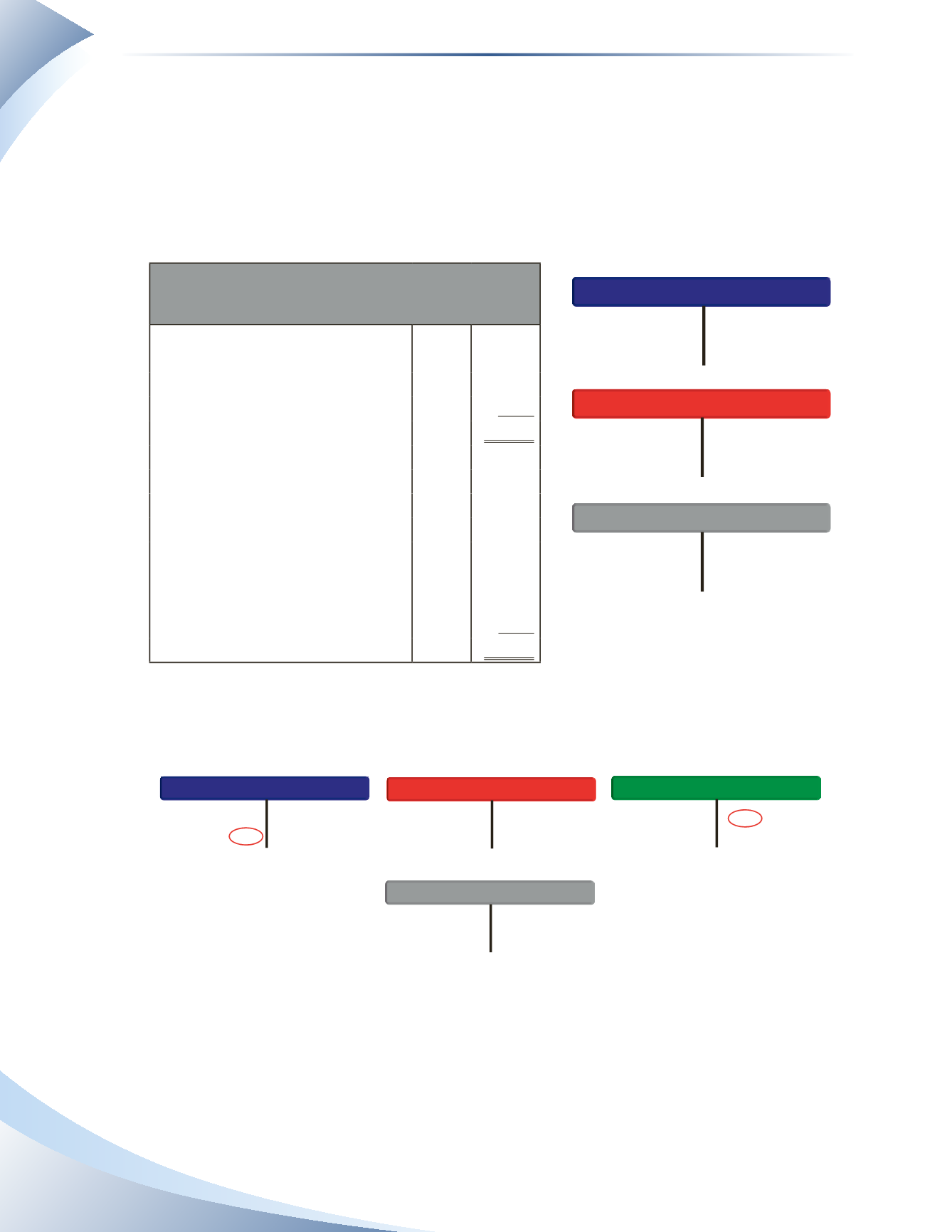
Chapter 6
The Accounting Cycle: Statements and Closing Entries
140
Direct Method: Close Directly to Owner’s Capital
Closing entries are those entries made to revenue and expenses at the end of an accounting period
to close out the accounts. To illustrate the concept of
closing entries,
examine MP Consulting’s
balance sheet at the beginning of January 2016 (i.e. the end of December 2015). At the beginning
of the period, MP Consulting’s balance sheet was in balance, as shown in Figure 6.8. T-accounts
are also used to illustrate the overall values of three categories: assets, liabilities and equity.
MP Consulting
Balance Sheet
As at December 31, 2015
Assets
Cash
$3,000
Accounts Receivable
1,200
Equipment
6,000
Total Assets
$10,200
Liabilities
Accounts Payable
$1,000
Unearned Revenue
900
Bank Loan
3,000
Total Liabilities
$4,900
Owner's Equity
Parish, Capital
5,300
Total Liabilities and Owner's Equity
$10,200
________________
figure 6.8
+
PARISH, CAPITAL
DECREASE (DR)
INCREASE (CR)
+
-
-
-
+
10,200
4,900
5,300
ASSETS
LIABILITIES
INCREASE (DR)
DECREASE (DR)
DECREASE (CR)
INCREASE (CR)
Notice what happens in Figure 6.9 when we provide services to a customer who pays cash.
4,900
+
PARISH, CAPITAL
DECREASE (DR)
INCREASE (CR)
+
-
-
-
-
+
+
10,200
1,500
1,500
5,300
ASSETS
LIABILITIES
SERVICE REVENUE
INCREASE (DR)
DECREASE (DR)
DECREASE (DR)
DECREASE (CR)
INCREASE (CR)
INCREASE (CR)
________________
Figure 6.9
The balance sheet is now out of balance because assets have increased, but owner’s capital has not
been updated. A similar discrepancy occurs if a telephone bill is received and will be paid later, as
shown in Figure 6.10.


